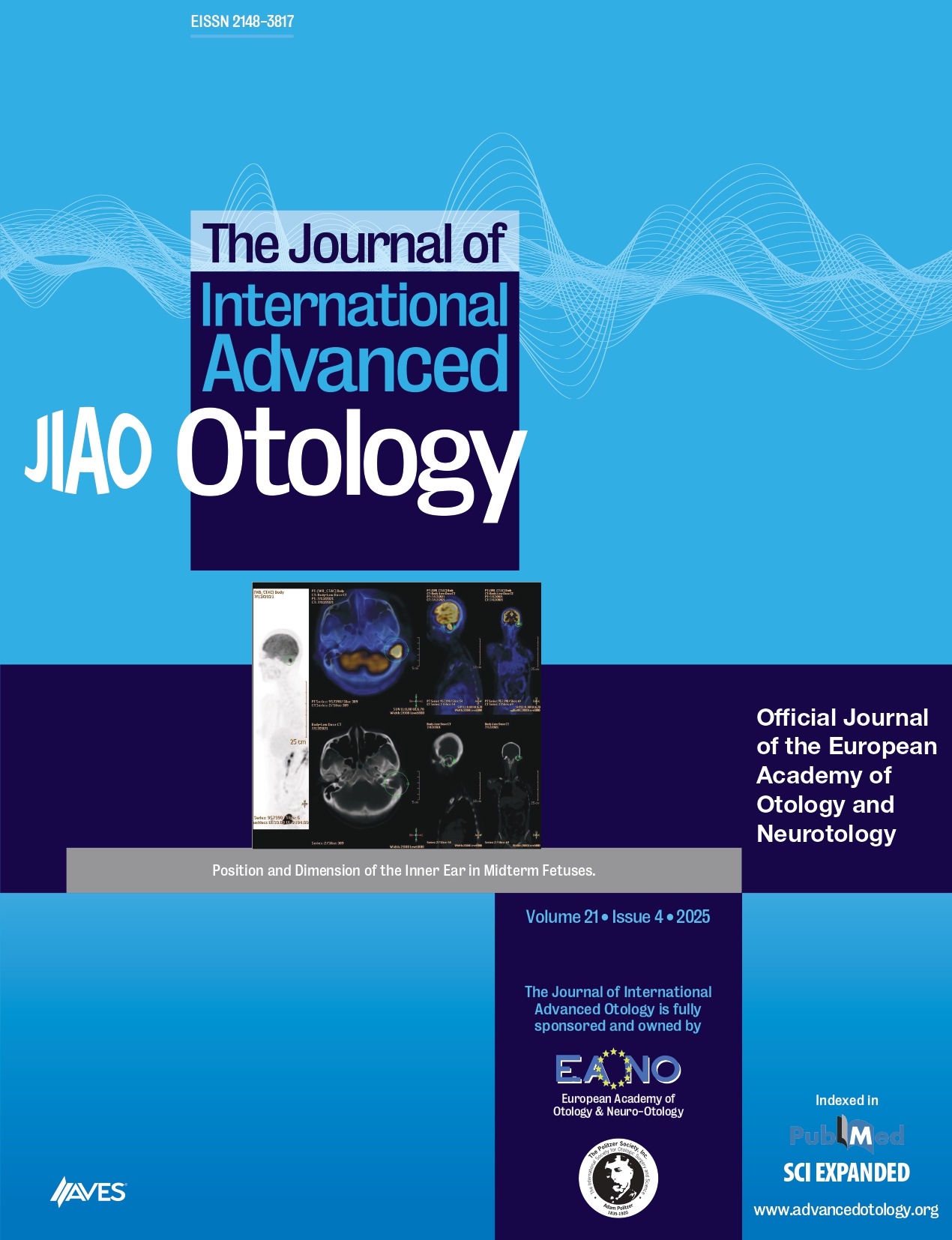Abstract
OBJECTIVE: The objective of this research was to investigate the possible relationship between tinnitus and certain bony inner ear structures using computed tomography (CT).
MATERIALS and METHODS: This was a prospective, controlled, double-blind study. The subjects of the study were divided into the following three groups: group 1 (G1), patients with unilateral sensorineural hearing loss (SNHL) and unilateral non-pulsatile tinnitus in the same ear; group 2 (G2), patients with normal hearing and unilateral non-pulsatile tinnitus; and group 3 (G3), healthy volunteers with neither tinnitus nor hearing loss. The basal turn length, internal acoustic canal (IAC) width and length, bony cochlear nerve canal (BCNC) width, and IAC diameter at the porus acousticus internus (PAI) were measured.
RESULTS: The mean BCNC width was significantly narrower in G1 and G2 than in the control group (G3) (p<0.001). For patients in G2, BCNC width was significantly narrower in ears with tinnitus (p<0.001) than in ears without tinnitus. The mean IAC diameter at PAI was also narrower in the G1 patients (p=0.007) compared with the other groups.
CONCLUSION: The results of this study suggest that CT evaluation of the inner ear structures is important in patients with tinnitus. According to the results, a narrow BCNC may cause phantom sensations and be related to cochlear nerve dysfunction. Therefore, it is recommended that clinicians evaluate BCNC carefully while assessing such patients.



.png)
.png)